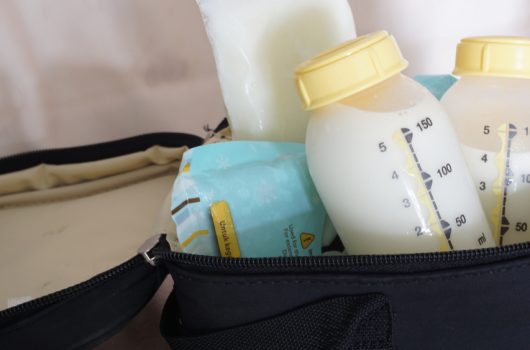It may be difficult to imagine that breastmilk can stay out of the refrigerator and not go bad. Mother’s milk is able to kill bacteria and viruses, and this means it stays good for some time without going bad when kept at room temperature.
That said, and in spite of the fact that some experts reckon breast milk can be kept for up to eight hours without the growth of bacteria, many mothers are uncomfortable with leaving it unrefrigerated for more than four hours.

The length of time breastmilk can stay fresh at room temperature depends on various factors, such as the heat of the room and whether the milk has been freshly pumped, refrigerated or frozen.
- Freshly pumped breast milk can be kept at room temperature for approximately five to eight hours.
- Once it has been refrigerated, it can stay out for about four hours.
- Once the frozen milk has been thawed in the refrigerator but not yet heated up, it can also stay out for about four hours.
- Frozen milk needs to be used immediately if it has been defrosted and warmed up.
- Reheated breast milk: Not enough research exists to determine whether thawed frozen milk is safe to freeze again and use. Most experts recommend that it should be discarded. If your baby does not finish its milk in one feeding, it is usually safe to refrigerate it within 30 minutes of the feed and reheat one more time before discarding it.
The growth of bacteria in breastmilk
Breastmilk has antibacterial properties that keep it safe for longer sitting out than many other foods. But it has its limits and can go bad. It will taste and smell bad, but even if this happens, it is not harmful to your baby. Your baby may not want to drink because of the taste.
One of the factors that affect how quickly bacteria grow is temperature. If the milk has been sitting out in a hot room for longer than six to eight hours, it could be unsafe. The cooler the room is in which it is stored, the better. If you do not have access to a refrigerator or freezer, think about storing it in an insulated cooler with some ice packs.
Once your breastmilk has been expressed, always label the container with the date you expressed it. Place it in the refrigerator at the back where the temperature is coolest or in the freezer. If it’s placed in the front of the refrigerator, it’s subjected to a blast of warm air every time the door is opened. It’s probably best to fill individual containers with the milk to be used for one feed.

How long does it keep?
Room temperature: Four hours is optimal for the storage of freshly pumped breast milk, but it can be kept for up to six hours if the room is not too warm.
Insulated cooler: If you do not have access to a refrigerator, you can store your freshly expressed milk in an insulated cooler. Surrounded by ice packs, it should stay fresh for about 24 hours.
Refrigerator: Three days storage in the refrigerator is optimal for freshly expressed milk, but it can be kept for up to eight days. Previously frozen milk can be kept in the refrigerator for up to 24 hours after it has thawed. It should not be refrozen.
Deep freezer: Freshly expressed milk can be stored in the back of the deep freezer for up to 12 months, but it’s best to use it within six months. The length of storage time depends on the type of freezer. The longer you store breastmilk, the greater the loss of nutrients.
Can leftover breastmilk be safely re-used?
The main problem with serving leftover milk is that when the baby feeds, bacteria from the baby’s mouth can contaminate the milk in the bottle. If you can avoid feeding your baby leftover milk, it’s best to do so. For many moms, their breastmilk is like liquid gold, and they don’t want to waste even a small amount. One way to combat this is to freeze it in smaller amounts. If you do use leftover milk, make sure to offer it within a few hours after the last feed, and it should be safe.
